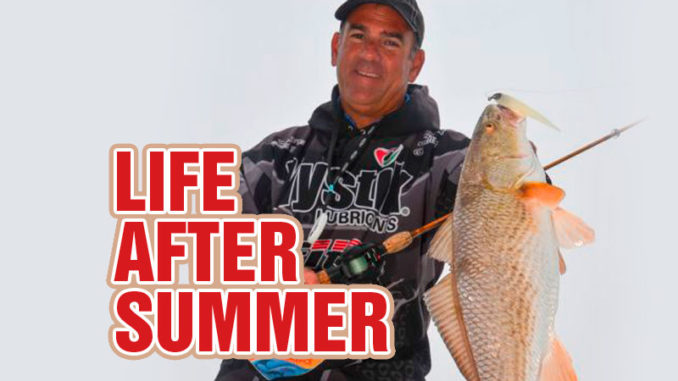
Football season also means some of the best coastal fishing of the year can be found in Southwest Louisiana. And this Big Lake guide knows just how to fill the boat with redfish and flounder — and even a few trout.
“Look at the camera! Look at the camera!”
Keeping him looking at the camera was almost impossible. Erik Rue’s brown predator eyes kept darting toward any sign of another fish to which to feed his artificial bait.
The 30-year veteran charter captain with Calcasieu Charter Service (337-598-4700) was out to show me there really is life after summer.
“The old tradition was that after Labor Day you put away your swim suit, parked the boat and put your rods up,” Rue said with a grin. “Then you get your shotguns out, go to football games, and begin to dove and teal hunt.
“But Labor Day to late November is some of the best fishing of the year. Plus, you have smaller crowds on the water and pleasant, cool weather.”
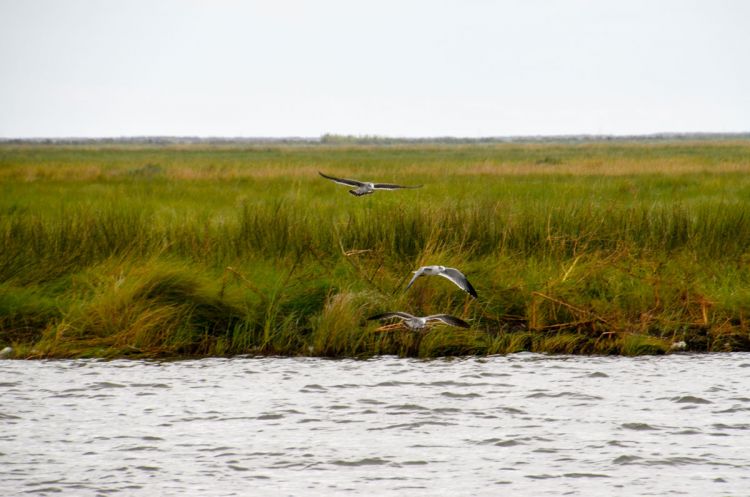
The options are varied.
“ Redfish is the name of the game, although some trout are available,” Rue said. “Some awfully good flounder fishing occurs, too, in October and November.
“I am starting to get people who just want to charter a trip to catch flounder.”
Fall fishing
Finding fish becomes predictable moving into fall.
“Redfishing then is shallow-water fishing,” the guide explained. “Lower water levels push fish normally up on flats and in the marsh in the summer to more-accessible areas where they are easier to spot.
“At that time of the year, the fish also school up and are aggressively feeding.”
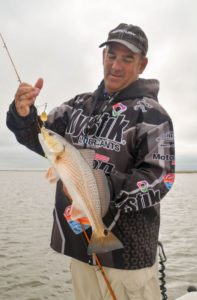
Feeding redfish can actually be seen blowing up on minnows. Other signs are pushes (bulging V wakes), muds (mud stirred up by the fishes’ tails), and some tailing.
Diving birds are important, too. Birds working the water’s surface usually mean feeding fish beneath. But Rue stressed the importance of watching large terns (probably royal terns), as well as the laughing gulls.
“Redfish here, this time of year, are a little different than elsewhere in the state. They school into packs,” he said. “If you see birds diving, you may catch two, three or four, and then they break up.
“Keep fishing in the vicinity and keep an eye out for any activity; often you can get right back on the same group of fish.”
The day begins
This day started out leisurely, after a big breakfast at Erik’s and Tina’s (his wife) lodge.
“It’s different this time of the year than in the summer,” Erik Rue said. “Then, we try to be on location before the sun comes up. Things are a lot more tense then.”
It was well after daylight when he left the lodge, running south-southeast to Grand Bayou and pushing upcurrent through the Grand Bayou Boat Bay.
Three boats were already just inside the bay with anglers fishing, while two more boats held cast-netters.
“Sometimes there are 15 or 20 boats cast-netting right here,” Rue explained. “They make bait balls with pogie meal to concentrate the shrimp. When it’s really good, they will catch their 25-pound-per-person limit in five or six casts of the net.”
The interior of the marsh looked like coastal marshes anywhere: broken patches of marsh grass laced with ponds, bayous, sloughs and lagoons, most of them unnamed.
At first it looked a little intimidating. This wasn’t going to be a matter of beating down a bank at random, blind casting for individual fish.
He was going to be looking for signs of feeding fish. Fortunately, as the day proved, when he found one redfish, he almost always found more.
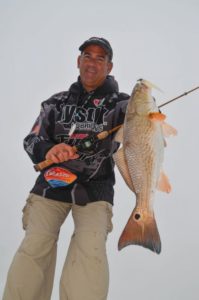 Rue did certain amount of blind casting, but he was always acutely alert to any sign of bait movement, feeding fish and — above all — diving bird activity.
Rue did certain amount of blind casting, but he was always acutely alert to any sign of bait movement, feeding fish and — above all — diving bird activity.
A limit of reds
As soon as he spotted anything of interest, the guide rapidly trolled the boat to within striking distance. Redfish, most of which he had to release because he quickly filled his limit, were the majority of his caught.
But a surprising amount of the feeding activity was created by doormat-sized flounders, each of which brought a beaming smile to Rue’s tanned face.
Icing on the cake was provided by several chunky speckled trout late in the morning.
The day was less than ideal. An upper-level low pressure system had dumped 4-plus inches of rain on the area with 25 mph winds the day before. This day was overcast and still gloomy, and winds had slackened to a brisk 15 mph.
In spite of the somber outlook, Rue confidently predicted he would find redfish.
“If you fish a spot and you don’t see sign, move to another spot,” he said. “When you begin to see signs that fish are there, then you have to figure out exactly where they are.
He started pecking at fish. Small, but legal-sized redfish, he dismissively called “rats” and promptly returned to the water. The rest of the fish were sized like they came out of a mold — all 21 to 24 inches long.
Bigger redfish can be found on refuge waters in the fall, he noted. Interestingly, the larger fish are more often found in schools.
“Just right-sized” reds — good eating and hard fighting — were found both in schools and singly.
The day warmed and Rue shucked his jacket. The pace of the bite began to pick up, as well. By early afternoon, he had enough of wrestling with the bronze bruisers.
With a limit in the box, topped off with several good speckled trout and flounders, Rue looked contented.
Capt. Erik Rue’s fall redfish lures
Capt. Erik Rue’s go-to bait for most of this morning’s fishing trip was a simple jighead and MirrOlure Lil John Twitchbait, but he made a special effort to point out the effectiveness of the Jenny’s Jigs jighead.
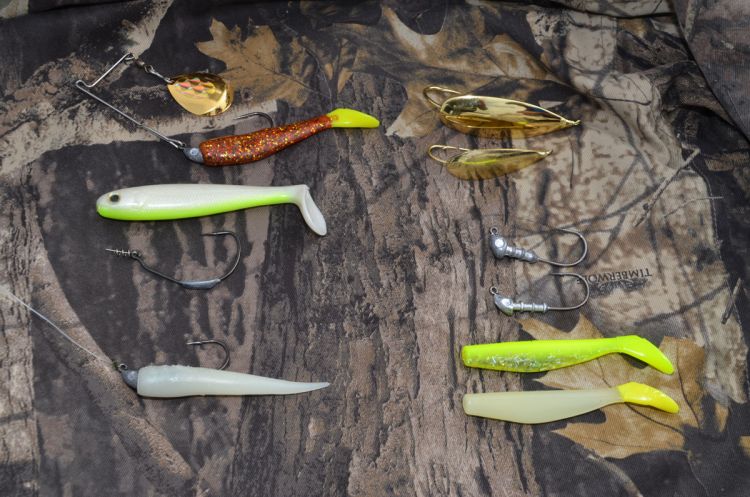 “These really work,” Rue stressed, pointing at the three rings on the neck of the jighead. “I don’t understand it. It’s like they make a suction on the bait.
“These really work,” Rue stressed, pointing at the three rings on the neck of the jighead. “I don’t understand it. It’s like they make a suction on the bait.
“Those jigheads with the barb will tear the plastic when a fish pulls on the tail. I can fish all day with a single tail on these heads.”
For being a man who makes his living fishing, Rue is surprisingly nonchalant about his lure choices.
“Most people make way too big a deal about baits,” he said. “They get all hung up on colors and stuff, and don’t pay attention to working the bait.
“Fish are stupid. “Let’s face it: They have a brain about this big (he made a circle with his fingers the size of a walnut). It’s very basic. They have to eat. The lures work. Look for the pieces of the puzzle.
“If all the pieces are there when they start feeding, you will catch them. You won’t catch them with this (he brandished a cell phone he whipped out of his pocket); catch your fish, not someone else’s.”
He went on to explain that he doesn’t think that the average person ever thinks about what his bait is doing.
“A person has to be so into his bait that he has to be his bait,” Rue said. “When you jig it, don’t pay attention to the rod. Instead, imagine what your bait is doing. If your rod moves 6 inches, the bait may move a foot.
“That’s not what a little bait fish does. It moves in short spurts.”
He said it’s critical to let the bait reach the bottom between bounces when it’s cold.
“ They won’t take it if (it doesn’t hit the bottom),” Rue said. “That’s an example of paying attention to your bait.”
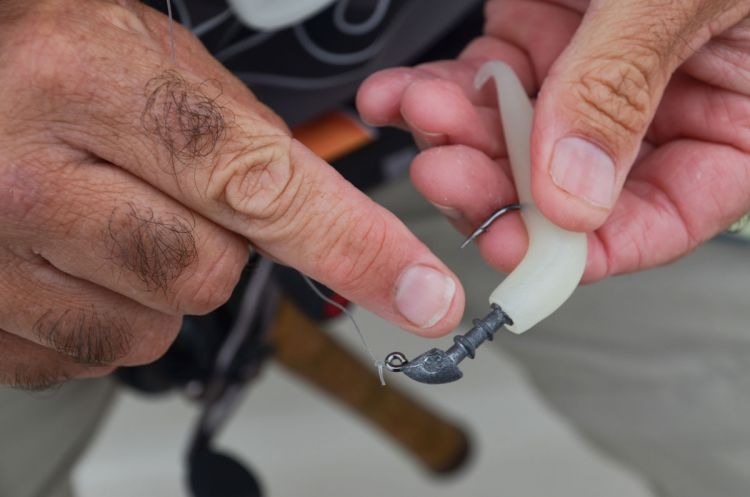
I interrupted to ask why, if color wasn’t important, were all his soft plastics glow or chartreuse.
“That’s just what I have confidence in,” he said with a shrug.
During the course of the day, soft plastics were Rue’s bread-and-butter lures.
In areas were water grasses were too thick to fish a jighead effectively, however, Rue shifted to a Jenny’s Jigs Redfish Spinner Bait or a Johnson gold spoon to keep his lure above the grass.
Cameron-Creole Watershed Project a ‘necessary evil,’ fishing guide says
Much of Rue’s fishing this time of year is done on Cameron Prairie National Wildlife Refuge located on the eastern shore of Calcasieu Lake.
The refuge is made up of two units: the 9,621-acre Gibbstown, bisected by Highway 27, and the 14,927-acre East Cove that is accessible only by boat.
The latter is where Rue fishes.
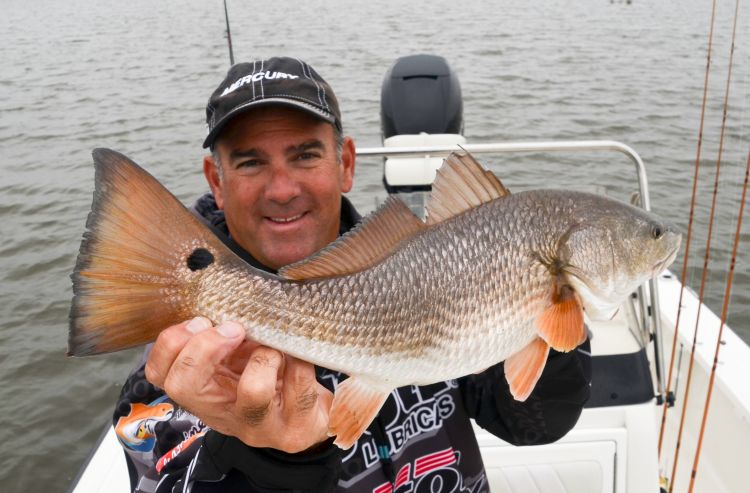 The system is managed as part of the Cameron-Creole Watershed Project, an effort to restore 64,000 acres of coastal marsh by closely managing water flow to achieve a balance between fresh and salt water.
The system is managed as part of the Cameron-Creole Watershed Project, an effort to restore 64,000 acres of coastal marsh by closely managing water flow to achieve a balance between fresh and salt water.
East Cove is isolated from Calcasieu Lake by a 19-mile long levee pierced by five weirs, two of which — Grand Bayou and Lambert Lake — are accessible to the public for fishing.
The weirs’ gates are opened and closed as needed to manipulate salinities.
Access from Big Lake to East Cove is made through the Grand Bayou Boat Bay in the Grand Bayou Weir. The bay’s opening is 10 feet wide, but the vertical opening is limited by the bay’s overhead gate, meaning boats with T-tops cannot access the area.
Rue has to fold down his boat’s console rail and sometimes even remove his wind shield to slip through the bay.
When salinities become very high in the lake, the weirs’ gates are closed, although Rue noted they are usually open most of September, and all of October and November.
Inside the gates on the refuge, a fisherman will find something that looks much different from what a paper or electronic map indicates.
Much of what is shown on maps as land has eroded away and is now open water. Some of it is 4 feet deep, but some of it is 1 foot deep.
“It’s easy to strand a 24-foot bay boat in the shallows,” Rue cautioned. “Be careful until you learn the area.”
The Cameron-Creole Watershed Project controversy
The Cameron-Creole Watershed Project, like many marsh restoration projects, carries fishing controversy baggage.
Capt. Erik Rue did his best to provide a balanced explanation of what has gone on.
Prior to its construction, the marshes of the area were noticeably eroding: Islands were disappearing and ponds were getting wider.
But fishing was very good, both for speckled trout and redfish.
Commercial shrimpers were early opponents to the project, citing plummeting catches of shrimp.
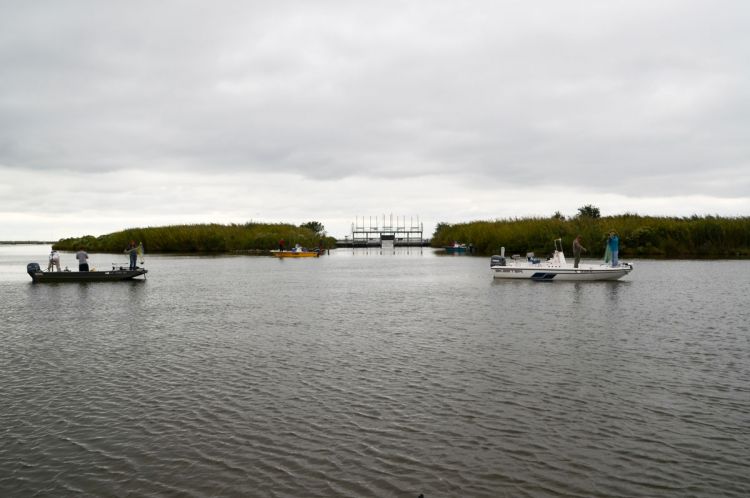 Then trout fishing within the footprint of the project steeply declined.
Then trout fishing within the footprint of the project steeply declined.
“Trout boats would be all in here,” Rue said, waving his arm over the marsh. “Now it’s no longer a trout spot.”
Rue admitted that it is difficult to pinpoint a cause-effect relationship between the project and trout fishing success in the lake. But he noted that after Hurricane Rita in 2005 blew out the levees separating the project area from the lake, essentially reconnecting the natural bayous to the lake, there was increased fishing success.
“Trout fishing exploded like you can’t imagine,” Rue said.
The levees were down for a couple of years before being rebuilt with sheet pilings, he ezplained.
With their rebuilding, the lake’s trout fishery began a gradual decline.
In spite of that, Rue doesn’t feel locals carry a lot of hostility to the project.
“In fact, a lot of people love it,” he said. “In the fall, the parking lot at Hebert’s (Marina) is full of trucks and boat trailers. They are all cast-netting for shrimp, chicken-necking for crabs or anchored fishing.
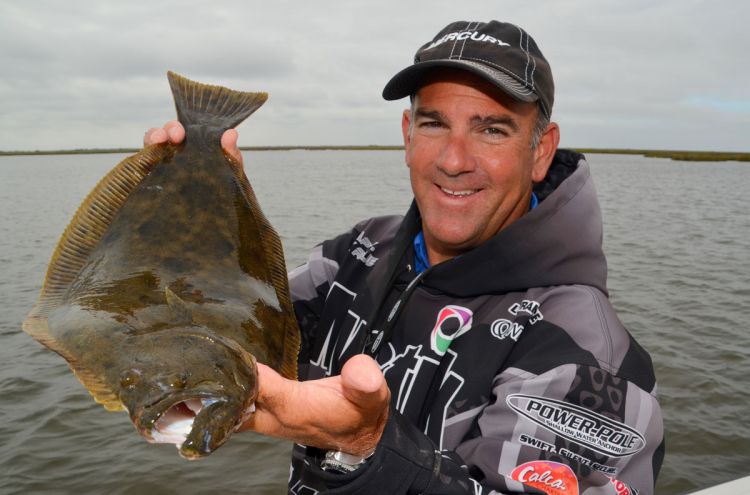
“They will tie their boats to each other; it’s sickening. “They will troll up and cast-net 15 feet from your boat while you are fishing. Boats are steadily going in and out over your lines, and people never stop catching. People love the weirs now.”
And the guide admitted that, despite the negatives, the project is probably a good thing.
“I personally think that the fishing would be better without them, but they are a necessary evil,” Rue said. “Without them, I think this area would be severely eroded. Deeper in the system, the marshes have actually regrown.
“In spite of the fact that they have impacted my fishing, if the marsh is still here for my grandkids’ kids, they were a great thing. I think that’s true all along the coast. People think about what’s happening to them now, not the distant future.”


